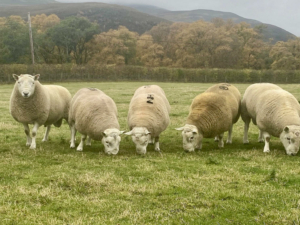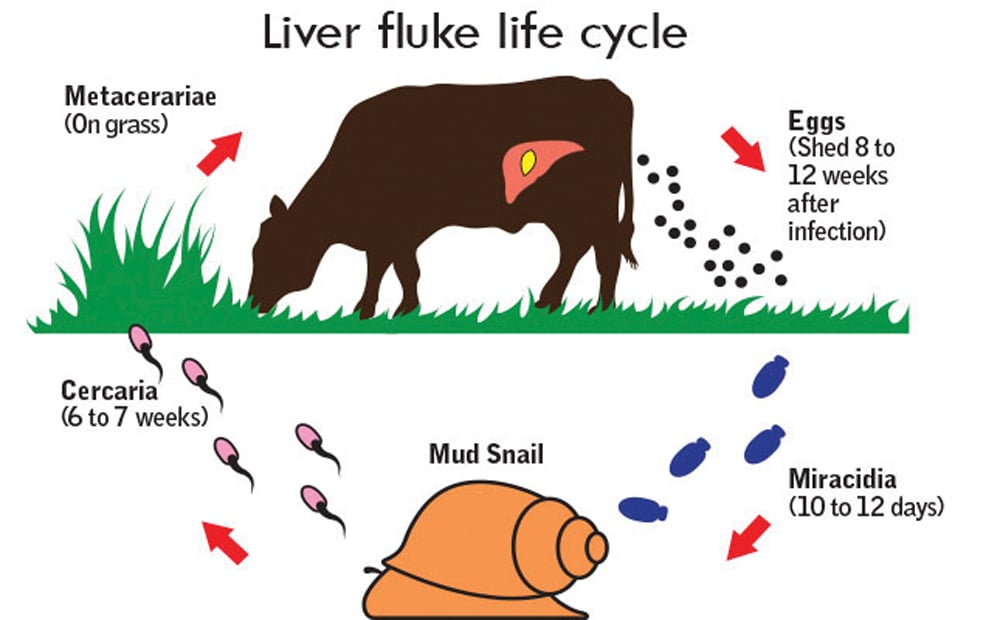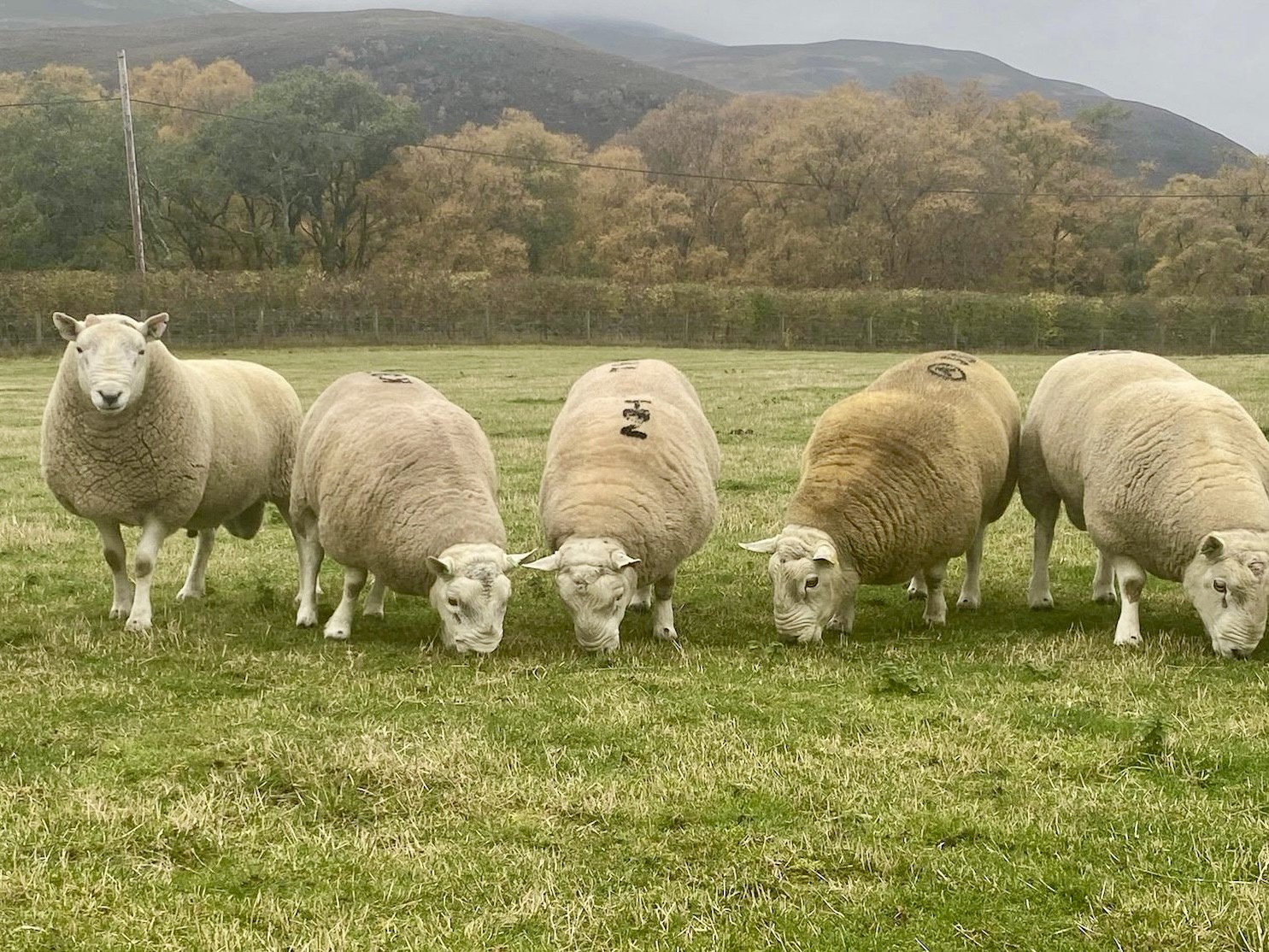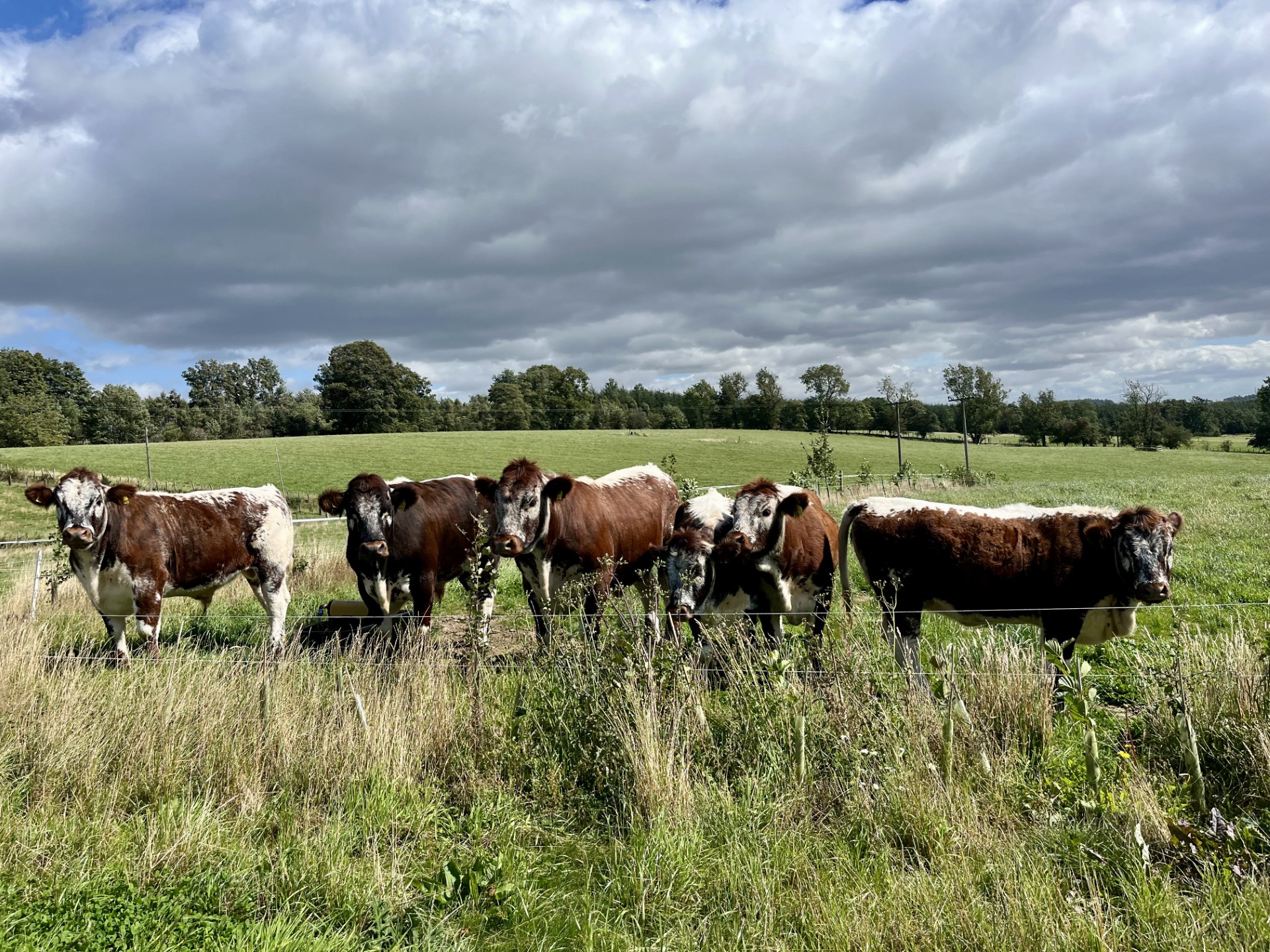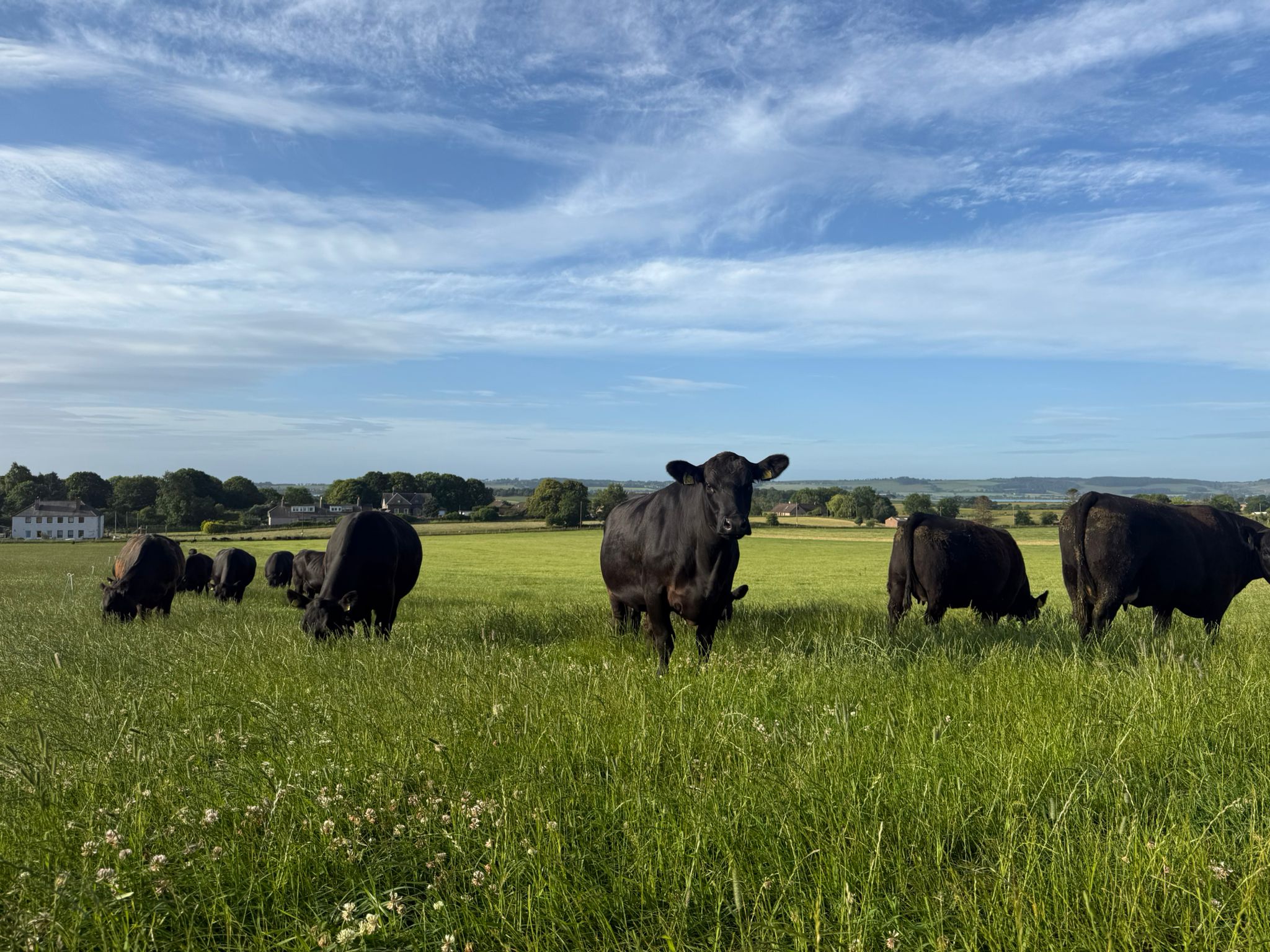Farm Newsletter September 2024
The continued wet weather has seen a recent late flush of grass for many, as such we’ve been out to treat a a number of downer cows with staggers or milk fever. Ensure at-risk cows have high mag buckets available, ad lib access to straw will also help reduce the risk by slowing gut transit time for grass with high moisture content.
As predicted, parasites have been causing some issues, with cases of lungworm in cattle and parasitic gastroenteritis in lambs. We’ve also identified a few farms with emerging resistance issues, which highlights the importance of carrying out post-treatment worm egg counts.
In recent days Bluetongue has been making a surge into south eastern England, which is cause for concern. Bluetongue is spread by midges. The infection in England seems likely to be from wind blown midges from the continent, hopefully we are sufficiently far north for this not to be a direct risk to us. However, with midges still active within the UK there is still the risk of spread out of those counties currently classified as restriction zones. All farmers are asked to remain vigilant to the signs of Bluetongue and not put yourself and neighbours at unnecessary risk by buying in stock from areas of higher risk. Further guidance on spotting the signs of Bluetongue can be found at www.gov.uk/guidance/bluetongue
Lungworm and cattle wormer resistance
The wet and allegedly warm summer has seen a further rise in the number of lungworm cases seen. Generally this is a problem that is managed on farms that are endemically infected but in addition to this we continue to see new farms affected every year. Groups of cattle at grass with a soft cough should be investigated as soon as possible although on occasions it can present as an individual animal in sudden onset respiratory distress or even sudden death. Investigations can help prevent respiratory disease over the winter and better inform parasite control for the following years.
Wormer resistance is a well established issue in sheep but is now an emerging problem in a few cattle herds. As an industry we have relied heavily on a single class of wormer, the ivermectins, for many years now. Given the ease of use and relatively low cost of these products it is not surprising they have in some cases been overused. If you suspect wormer resistance then give us a call and we can arrange testing to establish the facts.
Purchasing cattle from TB1 areas
Despite the inherent risks of this we continue to see clients take the plunge to avail themselves of certain genetics or ‘bargains’! Just a reminder that as of last year the rules changed slightly so that incoming cattle now have a 30 day window in which to be tested rather than 60 days. (Remember the skin test will only pick up less than half of infected animals so it is by no means a guarantee!)
Furthermore, compensation for animals that are compulsory slaughtered as a result of failing a test has been reduced by 50%. There are additional restrictions around the definition of quarantine requirements as well. For anyone still considering such purchases the details of the new restrictions can be found here Changes to bovine TB Controls and Compensation Arrangements in Scotland (defra.gov.uk)
Remember there are also potential issues with BVD and Bluetongue as above ……
Semen Sampling Tups
For conventional spring lambing flocks, now is the time to start thinking about semen sampling tups. From our records up to 20% of tups are likely to be sub-fertile, and whilst running multiple tups together may compensate for this in some degree, it’s certainly not a guarantee as its possible the sub-fertile one is the dominant one, or you could be unlucky and have multiple sub-fertile boys working together. In addition, running more tups than is actually required, just in case, is additional cost that could be avoided.
Knowing that a tup stud is fully fit and firing in advance of breeding means you give yourself the best chance of an optimal scanning % and a compact (and therefore healthy) lambing. It also gives you more options should things go wrong, such as a tup going lame.
Semen sampling should be done from about 4-8 weeks pre-tupping as this allows you to plan what you have and what you need. Or, if there are key sales coming up and you need to make decisions about how many need to be purchased, then we can test in advance of these sales.
Remember that it takes about 8 weeks for sperm to be produced, so now is also the time to start thinking about any treatments and vaccinations that tups might need to get them in the best shape for tupping, such as trace element supplementation, footrot vaccination and worming if required.
For any advice on sheep fertility and to book your tups in for testing, please just give us a call.
Pneumonia in calves – plan ahead
There are many different vaccines out there, for many different pathogens, so a one-size-fits all approach to vaccination is not appropriate, and the protocol for your farm will depend on what bugs we’ve found historically and what the risks are.
As much as it is important to use the right type of vaccine, it is really important to administer it correctly. When we investigate pneumonia outbreaks where vaccination has been employed, we commonly find one of two things. Either a novel bug, or that correct vaccination has been given, but it was administered at a time of stress to the calves; typically weaning, housing or castration/dehorning (or all three!).
As we all know, when we are stressed, this suppresses our immune system, meaning we are more likely to pick up simple bugs like a cold or flu, and it’s no different for the calves. The stress of weaning and housing suppresses the immune system, meaning it can’t respond as effectively to the vaccine, leading to less of a “take” to it, and thus breakdowns are more likely.
Therefore it is advisable that vaccination is given as the only task on the day and at least two weeks prior to housing and/or weaning. We appreciate this creates an extra job and handling, but from our experience it really does pay dividends. If you manage to avoid just one death or respiratory cripple it will have been worth it!
It addition to vaccination we need to think about the calves environment through the winter and what we can do to reduce bacteria or viral load on them. Some things to think about:
- Ventilation in the shed. If it’s not adequate what can you do to increase it? Knocking out intermittent yorkshire boarding if appropriate, leaving certain doors and sides open or installing mechanical ventilation. However, make sure you avoid draughts at calf level. If you’re not sure about how adequately ventilated your sheds are, we can visit with a few smoke bombs and check the air flow for you.
- Stocking density. Both over stocked and under stocked housing can create problems. Under stocking can lead to poor airflow as not enough heat is generated to move the air, whilst over stocking will lead to fast spread of bugs and quick spoiling of bedding. Space allowance will vary depending on type of hosing and size of animals but as a rough guide a 300kg calf should be allowed 3-4m2 space in loose straw courts.
- Bedding. Skipping on bedding can be a false economy. Moisture from spoiled bedding will favour survival of pneumonia bugs, so even if straw prices are high or availability is short, ensure enough dry bedding on a regular basis, otherwise you could end up paying in greater medicine usage or pneumonia deaths.
- Mixing of stock. Ensure calves are housed in age related groups. Housing alongside older calves or adult cows can be a risk.
Cull ewe screening
This next month will see many starting to select which ewes will return to the tup and which will not, based on issues such as poor udders, broken mouth, and failure to make up BCS post weaning.
This is an ideal opportunity to check in on the general health of the flock and pick up any underlying diseases which may be hampering performance. Diseases such as Johne’s disease, Maedi and OPA are all relatively common but often under-diagnosed. Whilst these can be frustrating diseases to deal with, there are practical solutions to them all and it is far better to be in control and find these diseases before they come looking for you!
In addition, £250 can be claimed under the PFSF grant scheme as part of investigations into or control of these diseases, making this year a worthwhile year to carry out a “cull ewe screen”.
A cull ewe screen could involve taking samples from, scanning the lungs of, or post-mortem examining a small number of sheep in poor BCS. Please give us a call to discuss.
Free IBR testing
IBR in a herd can have significant impacts on incidence of respiratory disease, as well as fertility and abortions.
If you are unaware of your IBR status but would like to know where you stand we can carry out an indicative screen for no charge if the bloods are taken at the same time as BVD bloods. Please contact surgery for details.
Flock Health Club Meeting – Johne’s in sheep
Next month our Flock Health Club will meet again to discuss amongst other things, Johne’s disease in sheep. Johne’s in sheep often goes undiagnosed but can have significant impacts on culling rate, on farm mortality and lactation potential of ewes.
Our Flock Health Club is open to all clients with commercial sheep flocks and we’re always very happy to welcome new members. The club has a few packages available from just £15/month.
If you are interested in joining the club, you would be welcome to attend the meeting to see what it’s all about, just contact Ed at the surgery. The meeting will be held on the evening of the 23rd of September.

